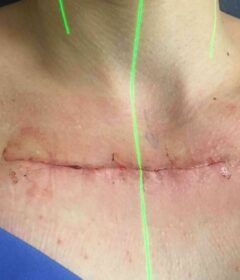Experience the Right Solutions for Orthodontic Retainers

The teeth are normally in a position of neuro-muscular equilibrium: this means that the teeth are subjected, on the one hand, to lingual pressure, and, on the other hand, to lip or cheek pressure. As soon as one of these muscle systems outweighs the other, the teeth migrate. This weak migration, at the beginning, can become very important over time. This movement will be all the more accentuated as the periodontium is weak and weakens even more with age. Get the best use of the retainer online now.
An important initial anomaly: we note that malocclusions of complex origin are difficult to treat but above all difficult to stabilize. A very important skeletal or dental abnormality is more likely to recur after treatment than a moderate abnormality. Teeth which are very strongly dystopian tend, more than others, to return to their initial position. These are teeth with significant axial rotation or with significant overlap with other teeth.
When The Appearance Of New Pathologies Is Independent Of The Initial Pathology?
A new dysfunction can arise and create an occlusal anomaly. Once the treatment is finished, the appearance of new dysfunctions, including lingual interposition, are really the most recurrent factors and the most difficult to eliminate. Lingual interposition between the arches in function or at rest creates an incisor vertical open bite.
- New bad habits, tics, sucking a finger of the thumb: a subject who interposes his tongue, or his thumb, between the dental arches will cause the appearance of an incisor open bite.
- Resumption or a continuation of the growth of the mandible can make re-appear a mandibular whereas it was initially corrected by orthodontics. Secondly, a surgical indication is required.
- When wisdom teeth erupt, pressure from the back to the front of the mouth can eventually cause new crowding to appear.
- Weakened periodontium: a subject suffering from periodontal disease will experience significant dental migrations, the bone support being weakened or reduced.
- A subject who has nocturnal bruxism may collapse their bite.
The loss of teeth that are not compensated by the placement of prosthesis leads to significant intra and inter-arch anomalies. Neighboring teeth tilt. The antagonists move in a vertical direction.
Prevention of Recurrence
Regardless of the respect of the restraint phase and of a good management of the treatment, after a precise diagnosis, the cooperation of the patient is essential. Some authors recommend overcorrection of the malocclusion to then allow a small physiological and natural recurrence to complete the occlusion.
The Finish of the Treatment
The quality of the meshing coronary reports and that of the orthodontic finish is a recognized factor of stability. It is sometimes necessary to refer the patient after treatment to a dentist specializing in occlusion to better adjust the inter-cuspidation (dental engagement) by fine retouching the shape of the crowns.




